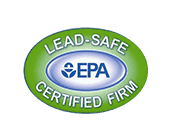The Seasonal Energy Efficiency Ratio, or SEER, is a measure of how efficiently an HVAC (heating, ventilation, and air conditioning) system uses electricity to cool your home. It calculates the cooling output of a system over a typical cooling season, divided by the energy it consumes in watt-hours. The higher the SEER rating, the more efficient the system is, and the less electricity it will consume to cool your home.
SEER ratings have been around for decades, but in 2023, a new standard called SEER 2 is introduced. This new standard aims to provide an even more accurate measure of an HVAC system’s energy efficiency, and it will be mandatory for all new air conditioning units to meet SEER 2 requirements.
So, what is SEER 2, and how will it affect your HVAC system? Let’s take a closer look.
What is SEER 2?
SEER 2 is a new standard that measures HVAC systems’ energy efficiency by considering a broader range of operating conditions than the current SEER standard. Specifically, SEER 2 includes the following changes:
More representative temperature ranges
The current SEER standard measures efficiency based on a set of temperature conditions (95°F outdoor temperature, 80°F indoor temperature). SEER 2 will use a wider range of outdoor temperatures (from 65°F to 117°F) and indoor temperatures (from 60°F to 100°F) to provide a more realistic assessment of how an HVAC system performs under different conditions.
Weighted efficiency calculation
SEER 2 will use a weighted average to calculate an HVAC system’s efficiency. The calculation will take into account how often an HVAC system operates under different conditions, with more weight given to conditions that occur more frequently.
Updated test procedures
The SEER 2 standard will use new test procedures to determine the efficiency of an HVAC system. These new procedures are designed to be more accurate and reflect real-world operating conditions.
The implementation of SEER 2 2023 will mark a significant change in how HVAC systems are rated. By taking into account a wider range of operating conditions, the SEER 2 standard provides a more accurate measure of an HVAC system’s energy efficiency.
SEER vs SEER 2: What’s the Difference?
The primary difference between SEER and SEER 2 is the range of operating conditions that each standard considers. SEER rates an HVAC system’s efficiency based on a narrow set of temperature conditions, while SEER 2 considers a wider range of temperatures and weights each condition based on how often it occurs.
To illustrate the difference, let’s consider an example. Suppose you have an HVAC system with a SEER rating of 16 and a SEER 2 rating of 18. If you were to install both systems in a location where the outdoor temperature is 95°F and the indoor temperature is 80°F, you would not notice a significant difference in energy efficiency between the two systems.
However, if you were to install the systems in a location where the outdoor temperature ranges from 65°F to 117°F and the indoor temperature ranges from 60°F to 100°F, the SEER 2 system would likely be more efficient, as it is rated to perform well under a wider range of conditions.
It’s worth noting that SEER 2 ratings are expected to be higher than SEER ratings for most HVAC systems, but this doesn’t necessarily mean that SEER 2 systems will be more expensive. In fact, many HVAC manufacturers are already designing SEER 2-compliant systems that are cost-competitive with current models.
What Does SEER 2 Mean for Your HVAC System?
If you’re in the market for a new HVAC system, SEER 2 compliance will be something to look for. By choosing a SEER 2-compliant system, you can be confident that your new HVAC system will be more energy-efficient, resulting in lower energy bills and a reduced environmental impact.
Moreover, upgrading to a SEER 2-compliant system can also increase your home’s value. Many homebuyers prioritize energy efficiency, and a SEER 2-compliant HVAC system can be an attractive selling point for potential buyers.
If you already have an HVAC system, the introduction of SEER 2 may not have an immediate impact. However, it’s worth considering upgrading your system to a SEER 2-compliant model when the time comes. While the initial cost of a new HVAC system may be higher, the increased energy efficiency can lead to significant long-term savings.
It’s also important to note that SEER 2 compliance is just one factor to consider when choosing an HVAC system. Other factors such as system size, features, and brand reputation should also be taken into account when making a purchasing decision.
Conclusion
SEER 2 is a new standard for measuring HVAC system energy efficiency that was introduced this year. By taking into account a broader range of operating conditions than the current SEER standard, SEER 2 will provide a more accurate measure of an HVAC system’s energy efficiency.
Choosing a SEER 2-compliant HVAC system can result in lower energy bills, reduced environmental impact, and increased home value. While upgrading to a SEER 2-compliant system may come with a higher upfront cost, the long-term savings can be significant.
Ultimately, whether you’re in the market for a new HVAC system or not, it’s important to be aware of the changes that SEER 2 will bring and the benefits that come with choosing a more energy-efficient system. By making informed decisions, we can all play a part in reducing our energy consumption and protecting the environment, and Autumn Air can help you make it happen.
Call (602) 266-5247 or click here to book your appointment today!















